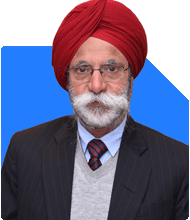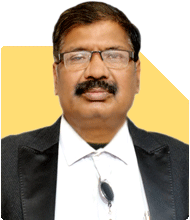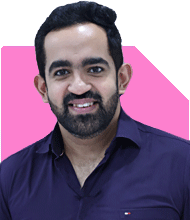Retiring in Two Years: How to Invest 1.5 Crore for a 5-6 Year Income of 1.5 Lakhs?
Ramalingam Kalirajan |8093 Answers |Ask -Follow
Mutual Funds, Financial Planning Expert - Answered on Feb 07, 2025
He has an MBA in finance from the University of Madras and is a certified financial planner.
He is the director and chief financial planner at Holistic Investment, a Chennai-based firm that offers financial planning and wealth management advice.... more

I am 58years old. I will retire in two years. Post retirement I will get a pension of 1.5 Lakh per month. My Monthly expenses are likely to be 2.5-3.0 lakh per month till age of about. 65.After that my pension will be enough to take care of my needs. On retirement I'll have a corpus of about 1.5 Cr. Where can I deploy this to get a regular income of about 1.5 Lakhs for 5-6 Years. I have my own house, car etc and have a central Gove health scheme for retirees.
Key Aspects of Your Financial Situation
Retirement in 2 Years: Pension of Rs. 1.5 lakh per month post-retirement.
High Expenses Initially: Rs. 2.5-3 lakh per month until age 65.
Short-Term Income Gap: Need Rs. 1.5 lakh extra per month for 5-6 years.
Corpus of Rs. 1.5 Crore: Needs to be deployed efficiently.
No Additional Liabilities: Own house, car, and central government health scheme.
Building a Reliable Income Plan for 5-6 Years
Keep a Liquidity Buffer: Maintain Rs. 10-15 lakh in a bank FD or a liquid fund for emergencies.
Fixed Income Options: Invest part of the corpus in safe, short-term debt instruments.
Systematic Withdrawals: Use a structured withdrawal plan to generate regular cash flow.
Partial Equity Allocation: Invest a portion in actively managed mutual funds for growth.
Reassess Investments Regularly: Review performance every 6-12 months.
Detailed Investment Strategy
Short-Term (First 2-3 Years)
Stable Income Focus: Invest Rs. 60-70 lakh in debt instruments for regular withdrawals.
Low-Risk Allocation: Choose safe options with periodic interest payouts.
Liquidity Management: Keep Rs. 10 lakh for unexpected expenses.
Medium-Term (Next 3-4 Years)
Balanced Approach: Invest Rs. 40-50 lakh in a mix of debt and actively managed funds.
Growth-Oriented Strategy: Allocate 20-30% of this amount to equity for better returns.
Systematic Withdrawals: Plan phased withdrawals from safer investments.
Long-Term (After 5-6 Years)
Corpus Preservation: As pension becomes sufficient, shift focus to long-term growth.
Equity Allocation: Maintain a portion in mutual funds for future wealth creation.
Reinvest Surplus: If any amount remains, reinvest for later years.
Key Considerations for Tax Efficiency
Minimise Tax Impact: Withdraw from low-taxed sources first.
Use Capital Gains Efficiently: Follow new mutual fund tax rules.
Plan Withdrawals Smartly: Avoid unnecessary tax liabilities.
Final Insights
Balance Safety and Growth: A mix of fixed income and equity investments is ideal.
Ensure Regular Monitoring: Adjust investments based on market conditions.
Preserve Capital for Later Years: Plan wisely to sustain wealth beyond age 65.
Best Regards,
K. Ramalingam, MBA, CFP
Chief Financial Planner
www.holisticinvestment.in
https://www.youtube.com/@HolisticInvestment
You may like to see similar questions and answers below
Ramalingam Kalirajan |8093 Answers |Ask -Follow
Mutual Funds, Financial Planning Expert - Answered on May 27, 2024
Ramalingam Kalirajan |8093 Answers |Ask -Follow
Mutual Funds, Financial Planning Expert - Answered on Jun 06, 2024
Milind Vadjikar |1101 Answers |Ask -Follow
Insurance, Stocks, MF, PF Expert - Answered on Nov 06, 2024
Ramalingam Kalirajan |8093 Answers |Ask -Follow
Mutual Funds, Financial Planning Expert - Answered on Jan 02, 2025
Radheshyam Zanwar |1412 Answers |Ask -Follow
MHT-CET, IIT-JEE, NEET-UG Expert - Answered on Mar 12, 2025
Radheshyam Zanwar |1412 Answers |Ask -Follow
MHT-CET, IIT-JEE, NEET-UG Expert - Answered on Mar 12, 2025
Inderpaul Singh |47 Answers |Ask -Follow
Leadership Coach - Answered on Mar 12, 2025
T S Khurana |398 Answers |Ask -Follow
Tax Expert - Answered on Mar 12, 2025
T S Khurana |398 Answers |Ask -Follow
Tax Expert - Answered on Mar 12, 2025
Rajesh Kumar Singh |192 Answers |Ask -Follow
IIT-JEE, GATE Expert - Answered on Mar 12, 2025
T S Khurana |398 Answers |Ask -Follow
Tax Expert - Answered on Mar 12, 2025
Aamish Dhingra |14 Answers |Ask -Follow
Life Coach - Answered on Mar 12, 2025
Kanchan Rai |554 Answers |Ask -Follow
Relationships Expert, Mind Coach - Answered on Mar 12, 2025
Kanchan Rai |554 Answers |Ask -Follow
Relationships Expert, Mind Coach - Answered on Mar 12, 2025



























